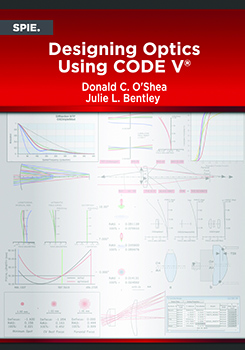|
The first thing you do when you start a new lens in an optical design program is to enter the parameters that describe its design. But how can you tell if you entered the design correctly? How do you determine if the results are correct? And how can you gain some sense of how well your lens performs? These questions express the daily concerns of all optical designers. Some of the answers come from an understanding of how a system should operate, some from experience, and some from common sense. This chapter is intended to give you some tools to help answer these questions. When it comes to experience, that is something you will have to gain on your own. 2.1 Collimation A lens (composed of a single element or multiple elements) separates the design space into object space and image space. Object space is also referred to as the front of the lens and image space as the back of the lens (Fig. 2.1). One of the reasons for doing so is that a lens has two focal points, and it is useful to be able to distinguish between them as the front and back focal points. Both of the figures in Fig. 2.1 illustrate collimated light, a bundle of light whose rays are parallel to each other. It is sometimes referred to as parallel light. The concept is useful because it provides a simple way to represent light from a distant source, which is usually described as a source at infinity. (A laser beam that can travel long distances without much broadening (divergence) may also be modeled as a collimated beam, but it is usually simulated using physical optics concepts rather than geometrical optics.) In reality, collimation is only an approximation, but it simplifies the problem, and we will take advantage of that. As to what constitutes a distant source and how it is treated in optical design, see the box, "Far Away." |
|
|


